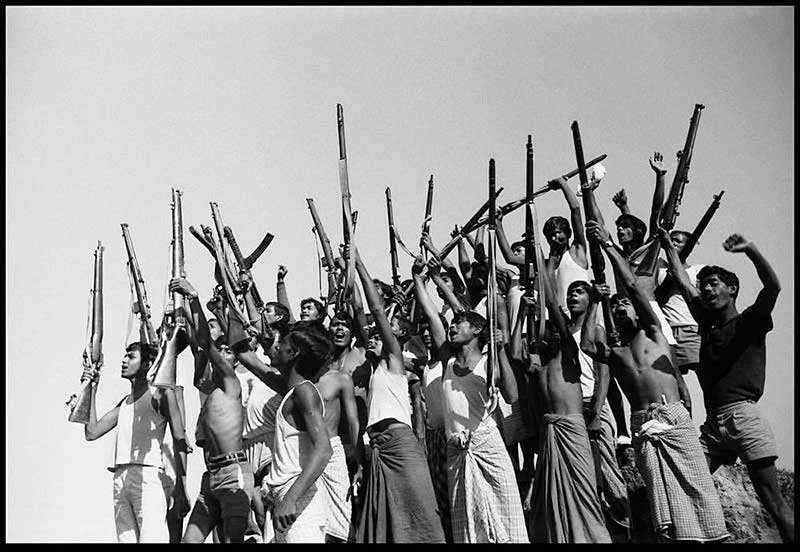Published at 03:03 pm December 17th, 2019
The New York-based international daily published an editorial with a prediction about the “dim future” of Bangladesh
Just a day after Pakistani army surrendered to Bangladesh following a nine-month bloody War of Independence, on December 17, 1971, the Wall Street Journal had published an editorial about the birth of the new country.
The New York-based international daily published the editorial, which was critical about the birth of the nation, expressing its huge frustration and of course, with a prediction about the “dim future” of Bangladesh.
Below is the editorial as published on December 17, 1971
REVIEW and OUTLOOK
Bengal’s Dim Future…
While it might appear, superficially, that something has been settled by the Indian conquest of East Pakistan, that appearance is superficial indeed.
Nearly all the problems of the unhappy Asian subcontinent are to be found, in microcosm, in what will presumably be the new Bengal nation, or Bangla Desh. They include overpopulation, economic backwardness and racial and religiously based hatreds, to name but a few.
They will not have disappeared with the end of the Indian-Pakistan fighting, if it really has ended. It is hard to imagine, in fact, any nation that has ever sought independence with fewer promising prospects for the future.
One of the most immediate possibilities is an attempt by Bengali guerrillas of the would-be new state to exact bloody retribution against non-Bengalis for their collaboration with the Pakistan authorities before the Indian invasion. The hatreds must be intense, considering the fact that the Pakistani army slaughtered thousands of Bengalis and uprooted several million more. It should be remembered that the army was itself exacting retribution after Bengali guerrilla attacks on army units, but few sane persons would argue that it was justified in the way it dealt with the Bengalis.
The mind boggles at the tragedies that have beset the hapless Bengalis, but the tragedies are partly of their own making. Even before the unwise decisions in 1947 that awarded part of Bengal to a distant capital in West Pakistan, the area was beset with strife and human suffering. Calcutta, a part of India but the cultural capital of the Bengalis, perhaps contains more misery than any other city in the world.
Thus, Bangla Desh, with little indigenous leadership, hordes of displaced people and few economic prospects, can hardly look forward to the dawning of a bright new era. Even if the raging animosities between Bengalis and non-Bengalis can somehow be submerged, possibly by the occupying troops of India, there still will be the enormous – economic and social problems of trying to resettle the millions of refugees who fled the Pakistani army’s repression.
The new Bangla Desh almost certainly will be very heavily dependent upon India, with a sort of protectorate status, for some time to come. Given the racial and cultural differences that exist between the Bengalis and the Indians, this relationship could wear thin, too, after a period of time.
Moreover, India’s own limited resources will not permit it to undertake a very extensive reconstruction program. This means it will have to ask help from other nations, many of which, like the United States, still have a bitter taste from India’s resort to war before possibilities for peaceful settlement were exhausted.
In other words, Bangla Desh is not a victory for anyone. Whether it will remain a continuing source of tragedy will depend very heavily upon the ability of richer nations to submerge their own differences and help with reconstruction efforts. If the events of the last few weeks are any indication, the prospects for that are not terribly bright either.
Where does Bangladesh stand now?
This year, Bangladesh celebrated its 49th Victory Day, putting behind all the speculations made by many, specially the World Street Journal.
It is true that Bangladesh was not in a very good economic state right after independence and was heavily dependent on aid. But 48 years on, Bangladesh has consistently outperformed her South Asian neighbours and is now on her way to becoming a middle income country by 2021.
In September 2019, the Asian Development Bank (ADB) forecast that Bangladesh is likely to continue as the fastest growing economy in Asia and the Pacific.
While releasing the “Asian Development Outlook 2019 Update: Fostering growth and inclusion in Asia’s Cities”, ADB Country Director Manmohan Parkash said based on the strong performance of 8.1% in the last fiscal year (FY19), the gross domestic product (GDP) is expected to grow by 8% in the current fiscal year (FY20) in Bangladesh with continued buoyant exports, robust private consumption with higher remittances, accommodative monetary policy, ongoing reforms to improve business climate or private investment, and public infrastructure investment.
The update indicated that the growth projection has been downsized at 6% for China, 7.2% for India, 2.4% for Korea, 2.8% for Pakistan, and 3.2% for Thailand.
In October 2019, the World Bank (WB) said Bangladesh’s economy will grow faster than all South Asian countries except for Bhutan in the current fiscal year.
In its latest report titled “South Asia Economic Focus, Making (De) Centralisation Work,” the WB also projected a 7.2% GDP growth for the country for the current FY 2019-20 and 7.3 % for the next fiscal.
In the FY 2019-20, Bhutan’s GDP will grow by 7.4 %.
In India, growth is projected to fall to 6% this fiscal year that ending in March next year.
Pakistan’s growth is projected to deteriorate further to 2.4% this fiscal year.
This was not how the Wall Street Journal thought in 1971 the future was going to be look like.

